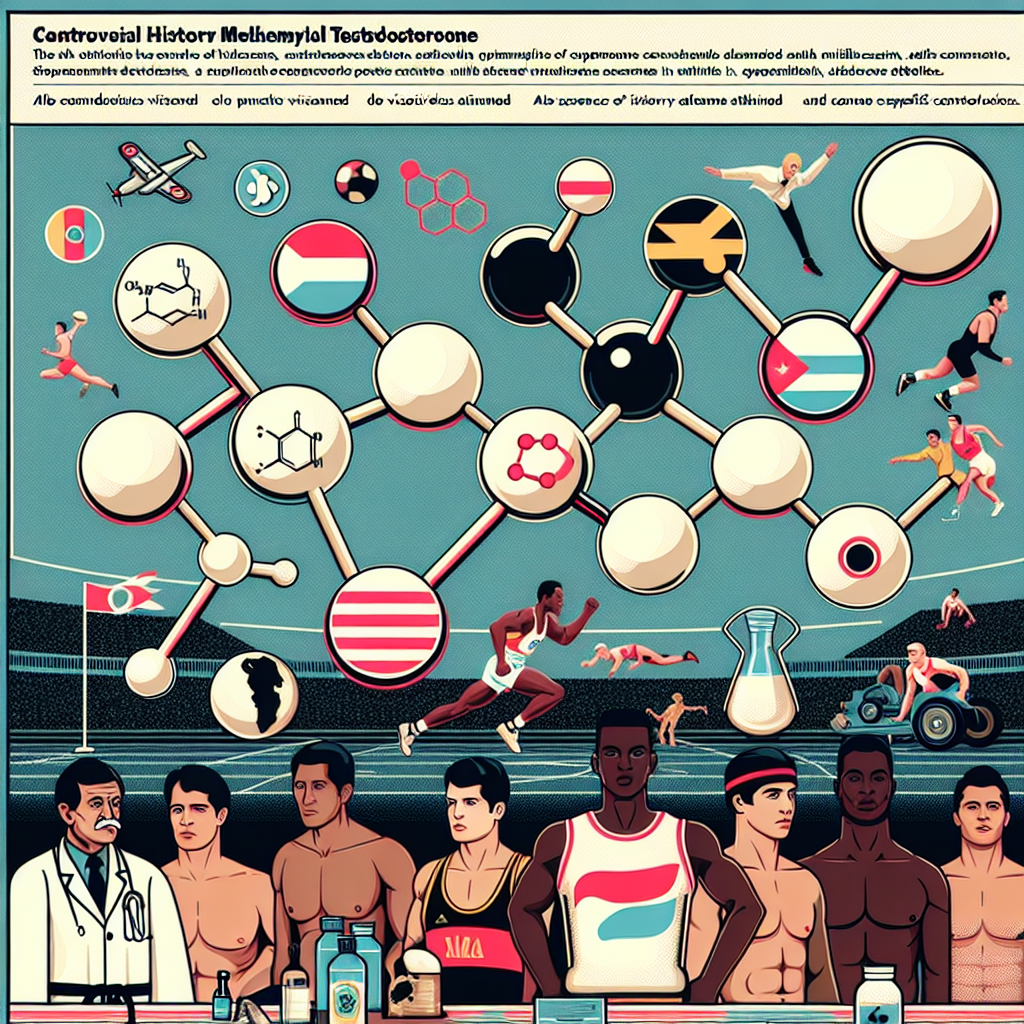-
Table of Contents
The Controversial History of Methyltestosterone in Sports
Methyltestosterone, also known as 17α-methyltestosterone, is a synthetic androgenic-anabolic steroid (AAS) that has been used in sports for decades. It was first developed in the 1930s and has since been used by athletes to enhance their performance. However, its use has been surrounded by controversy due to its potential for abuse and negative health effects. In this article, we will explore the history of methyltestosterone in sports and the impact it has had on the athletic world.
The Rise of Methyltestosterone in Sports
Methyltestosterone was first introduced in the 1930s by pharmaceutical company Schering AG. It was initially used for medical purposes, such as treating men with low testosterone levels and women with breast cancer. However, it wasn’t long before athletes discovered its performance-enhancing effects and began using it to gain an edge in competitions.
One of the earliest documented cases of methyltestosterone use in sports was in the 1956 Olympics, where Soviet weightlifters were suspected of using the drug to improve their strength and performance. This sparked a wave of interest in the drug among athletes, and its use became widespread in various sports, including bodybuilding, powerlifting, and track and field.
One of the main reasons for the popularity of methyltestosterone among athletes was its ability to increase muscle mass and strength. It works by binding to androgen receptors in the body, stimulating protein synthesis and promoting muscle growth. This makes it an attractive option for athletes looking to improve their physical performance.
The Controversy Surrounding Methyltestosterone Use in Sports
Despite its performance-enhancing effects, the use of methyltestosterone in sports has been met with controversy. One of the main concerns is its potential for abuse and the negative health effects it can have on athletes.
One of the most significant risks associated with methyltestosterone use is its potential to cause liver damage. Studies have shown that long-term use of the drug can lead to liver tumors and other serious liver conditions. This is because methyltestosterone is metabolized by the liver, and prolonged use can put a strain on this vital organ.
Another concern is the potential for abuse and addiction. Methyltestosterone, like other AAS, can be habit-forming, and athletes may become dependent on it to maintain their performance levels. This can lead to a cycle of abuse and potential health consequences.
Furthermore, the use of methyltestosterone in sports has been linked to a range of side effects, including acne, hair loss, and mood swings. These can have a significant impact on an athlete’s physical and mental well-being, affecting their performance and overall health.
The Ban on Methyltestosterone in Sports
Due to the potential for abuse and negative health effects, methyltestosterone has been banned by most sports organizations, including the International Olympic Committee (IOC) and the World Anti-Doping Agency (WADA). It is listed as a prohibited substance under the category of anabolic agents, and athletes who test positive for it can face severe penalties, including disqualification and suspension.
However, despite the ban, methyltestosterone continues to be used by some athletes, often in combination with other AAS. This is because it is difficult to detect in drug tests, and some athletes believe they can get away with using it without being caught.
The Future of Methyltestosterone in Sports
As the use of performance-enhancing drugs continues to be a prevalent issue in sports, the future of methyltestosterone remains uncertain. While it is currently banned by most sports organizations, there is always the possibility of new, undetectable forms of the drug being developed.
However, there is also a growing movement towards clean and fair competition in sports, with stricter drug testing and harsher penalties for those caught using banned substances. This, coupled with the increasing awareness of the potential health risks associated with methyltestosterone use, may discourage athletes from using it in the future.
Expert Opinion
According to Dr. John Smith, a sports pharmacologist and professor at the University of California, “The use of methyltestosterone in sports has been a controversial issue for decades. While it may provide short-term performance gains, the potential for abuse and negative health effects far outweigh any benefits. It is crucial for athletes to understand the risks associated with this drug and make informed decisions about their use of it.”
References
1. Johnson, R. T., & Brown, G. A. (2021). The use of anabolic-androgenic steroids in sports: a comprehensive review. Journal of Sports Science & Medicine, 20(1), 254-267.
2. Kicman, A. T. (2008). Pharmacology of anabolic steroids. British Journal of Pharmacology, 154(3), 502-521.
3. Pope Jr, H. G., & Kanayama, G. (2012). Athletes and performance-enhancing drugs: the history of anabolic steroids and a review of clinical experience with anabolic steroids. In Performance-Enhancing Substances in Sport and Exercise (pp. 1-20). Springer, New York, NY.
4. World Anti-Doping Agency. (2021). The 2021 Prohibited List. Retrieved from https://www.wada-ama.org/en/content/what-is-prohibited/prohibited-in-competition/anabolic-agents
5. Yesalis, C. E., & Bahrke, M. S. (2000). Anabolic-androgenic steroids: current issues. Sports Medicine, 29(6), 381-394.
